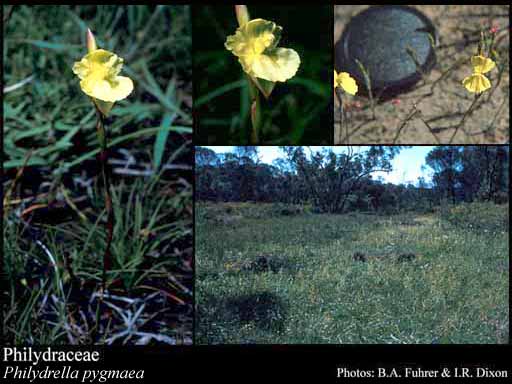- Reference
- Enum. Hort. Berol. Alt. 1:5 (1821)
- Name Status
- Current

Scientific Description
Habit and leaf form. Herbs. Perennial; plants with a basal concentration of leaves; rhizomatous, or cormous. Mesophytic, or xerophytic. Leaves alternate; spiral and distichous (the lower distichous, the upper spiral); sessile; sheathing. Leaf sheaths with joined margins (basally), or with free margins. Leaves more or less edgewise to the stem (though sometimes the blades more or less subulate); simple. Leaf blades entire; flat; linear, or lanceolate; parallel-veined; without cross-venules. Leaves eligulate; without stipules. Leaf blade margins entire. Stem anatomy. Secondary thickening absent.
Reproductive type, pollination. Fertile flowers hermaphrodite. Unisexual flowers absent. Plants hermaphrodite.
Inflorescence and flower features. Flowers aggregated in ‘inflorescences’; in spikes. Inflorescences terminal; simple or compound spikes. Flowers bracteate (the bracts rather large, the flowers sometimes partially fused with them); small to medium-sized; fragrant, or odourless (sometimes?); very irregular; zygomorphic. The floral asymmetry involving the perianth and involving the androecium. Flowers cyclic; tetracyclic. Perigone tube absent. Perianth of ‘tepals’; 6 (but diguisedly so); 2 -whorled; theoretically isomerous; joined (the two lateral (upper) members of the inner whorl fused with the upper (median) of the outer whorl to form a large, broad upper lip, the median (lower) member of the inner whorl forming a large lower lip, and the laterals of the outer whorl small and sometimes fused with the solitary stamen); petaloid; white, or yellow. Androecium 1. Androecial members free of the perianth, or adnate (sometimes adnate to the lateral tepals). Androecium exclusively of fertile stamens. Stamens 1; reduced in number relative to the adjacent perianth (i.e., reduced to the one stamen, which supposedly represents the median of an ancestral inner whorl). Filaments appendiculate (often, by virtue of adnation with two of the outer tepals), or not appendiculate. Anthers peltate; dehiscing via longitudinal slits; extrorse to introrse (becoming helically coiled at anthesis); tetrasporangiate. Pollen shed in aggregates, or shed as single grains; in Philydrum, in tetrads. Gynoecium 3 carpelled. The pistil 1 celled, or 3 celled. Carpels isomerous with the perianth. Gynoecium syncarpous; eu-syncarpous; superior. Ovary unilocular, or plurilocular; 1 locular (in Philydrum, at least above the base), or 3 locular (septal nectaries absent). Gynoecium stylate. Styles 1; attenuate from the ovary, or from a depression at the top of the ovary; apical; shorter than the ovary at anthesis to about as long as the ovary at anthesis. Stigmas 1; 1 - lobed, or 3 - lobed; capitate; dry type; papillate; Group II type. Placentation in Philydrum (unilocular), parietal; usually axile. Ovules in the single cavity when unilocular 15–100 (‘many’); 15–50 per locule (‘many’); non-arillate; anatropous.
Fruit and seed features. Fruit non-fleshy; dehiscent; a capsule. Capsules loculicidal (usually), or splitting irregularly (rarely). Seeds copiously endospermic; with starch. Embryo well differentiated. Cotyledons 1. Embryo straight. Seedling. Hypocotyl internode absent. Mesocotyl absent. Seedling collar not conspicuous. Cotyledon hyperphyll elongated; assimilatory; dorsiventrally flattened. Coleoptile absent. Seedling cataphylls absent. First leaf dorsiventral. Primary root ephemeral.
Geography, cytology, number of species. World distribution: Southeast Asia, Malaysia, Australia. X = 8, 11. 6 species.